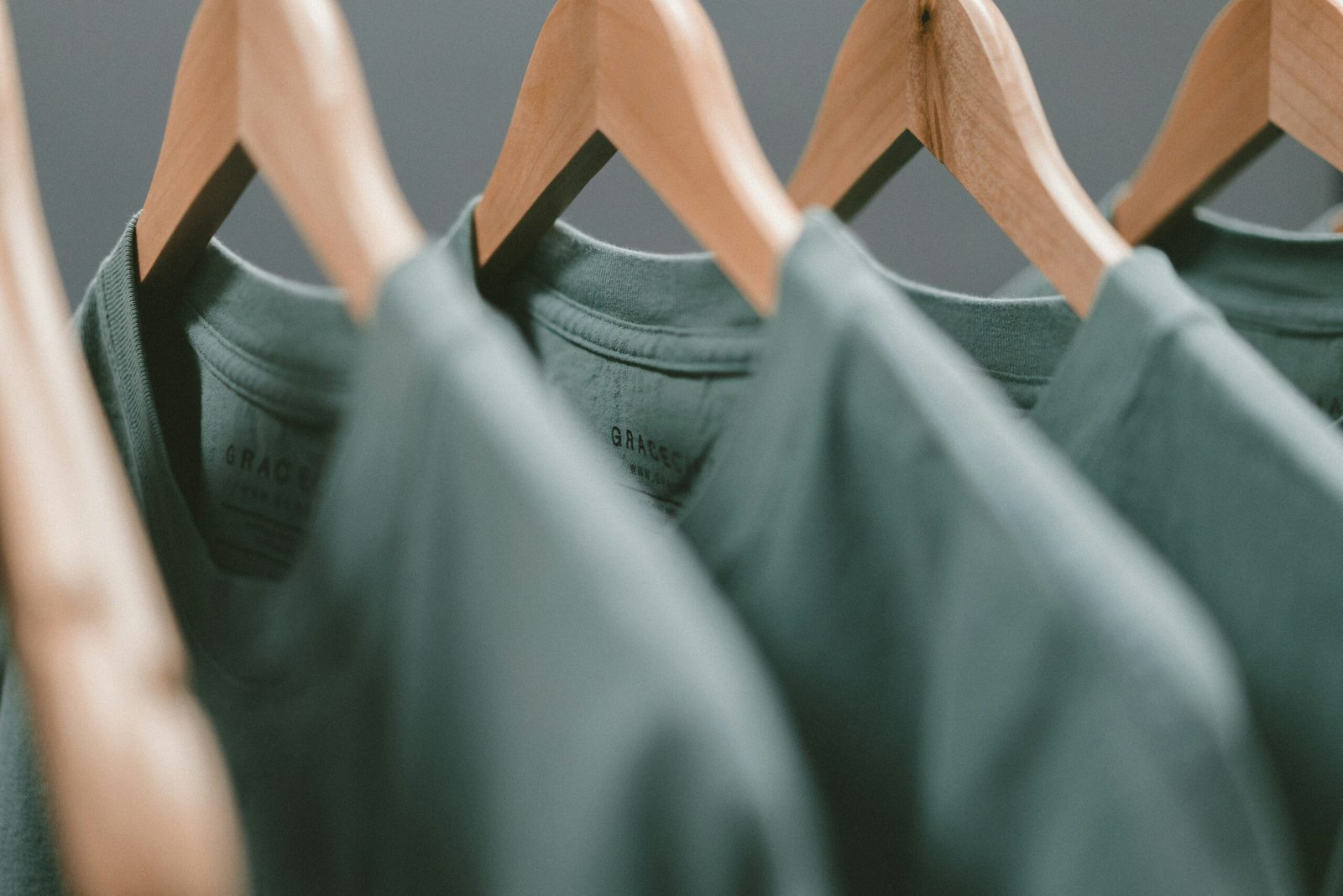
In recent years, the modeling industry has undergone a significant transformation. Gone are the days when models were expected to conform to a narrow standard of beauty. Today, diversity and inclusivity are at the forefront of the industry, and models of all shapes, sizes, and backgrounds are gracing the catwalks and magazine covers.
One of the most exciting aspects of this shift is the emergence of new fashion trends that reflect the changing face of modeling. Designers are now creating collections that celebrate individuality and showcase a range of styles that can be embraced by people from all walks of life.
One of the biggest trends that we are seeing in the modeling world is the rise of gender-neutral fashion. Traditional gender norms are being challenged, and models are breaking free from the confines of traditional gendered clothing. This trend is all about blurring the lines between masculine and feminine fashion, and it is empowering individuals to express themselves in a way that feels authentic to them.
Another trend that is taking the modeling industry by storm is sustainability. As the world becomes more aware of the environmental impact of the fashion industry, models are using their platforms to advocate for change. From promoting eco-friendly brands to wearing recycled and upcycled clothing, models are leading the way in making fashion more sustainable.
Of course, no discussion of modeling trends would be complete without mentioning the influence of social media. Platforms like Instagram have given models a direct line of communication with their fans and have revolutionized the way that fashion is consumed. Models are now not only walking the runway and appearing in magazines but also building their own personal brands and becoming influencers in their own right.
In this article, we will delve deeper into these trends and explore how they are shaping the modeling industry. We will also highlight some of the top models who are leading the way and setting the fashion agenda. So, whether you’re a fashion enthusiast or simply curious about the latest trends, this article is sure to provide you with a fascinating insight into the world of modeling and the looks that are currently making waves.
Minimalism is not just a trend in the fashion industry; it has also become a lifestyle choice for many individuals seeking simplicity and clarity in their lives. The concept of minimalism extends beyond clothing and accessories and permeates into various aspects of daily life, including home decor, workspaces, and even relationships.
Minimalism is about removing excess and focusing on the essentials. It is a conscious decision to declutter and organize, both physically and mentally. By adopting a minimalist mindset, individuals can create a sense of calm and tranquility in their surroundings, allowing them to focus on what truly matters.
In terms of home decor, minimalism promotes clean lines, open spaces, and a limited color palette. Furniture pieces are carefully selected for their functionality and aesthetic appeal, while unnecessary clutter is eliminated. This minimalist approach to interior design not only creates a visually pleasing environment but also makes it easier to maintain cleanliness and order.
Similarly, workspaces are also influenced by the principles of minimalism. A clutter-free desk with only the necessary tools and equipment allows for better focus and productivity. By eliminating distractions and unnecessary items, individuals can create an environment conducive to deep work and creativity.
Minimalism extends beyond physical spaces and into the realm of relationships. By simplifying social circles and focusing on meaningful connections, individuals can cultivate deeper and more fulfilling relationships. This involves letting go of toxic relationships and surrounding oneself with people who bring positivity and support.
In essence, minimalism is a powerful tool that can transform not only one’s fashion choices but also their entire lifestyle. By embracing simplicity and removing excess, individuals can create a sense of balance and harmony in their lives. Whether it be through minimalist fashion choices, decluttered living spaces, or meaningful relationships, the power of minimalism lies in its ability to bring clarity and focus to every aspect of life.
Not only are models embracing sustainable fashion in their personal lives, but they are also pushing for change within the industry itself. Many fashion shows and events are now incorporating sustainable practices, such as using eco-friendly materials for set designs and opting for carbon-neutral transportation.
Furthermore, models are using their influence to encourage designers and brands to adopt more sustainable practices. They are advocating for transparency in the supply chain, urging brands to disclose where their materials come from and how their garments are produced. By doing so, models are pushing for greater accountability and promoting a more ethical and sustainable fashion industry.
In addition to promoting sustainable fashion, models are also using their platforms to raise awareness about the social impact of the industry. They are shining a light on the working conditions of garment factory workers and advocating for fair wages and safe working environments.
Models are also challenging traditional beauty standards and promoting inclusivity within the industry. They are pushing for greater diversity in terms of body size, race, and age, and are encouraging brands to feature a wider range of models in their campaigns and runway shows.
Overall, the modeling industry is undergoing a significant transformation, with models leading the way in embracing sustainable fashion and advocating for positive change. Their influence extends beyond the runway, as they use their platforms to promote ethical practices, raise awareness about social issues, and challenge traditional beauty standards. By doing so, models are shaping the fashion industry into a more inclusive, transparent, and sustainable space.
3. The Rise of Gender-Fluid Fashion
The fashion industry has also been witnessing a shift towards gender-fluid fashion. Breaking away from traditional gender norms, models are embracing clothing that transcends traditional boundaries and allows for self-expression.
Gender-fluid fashion is all about blurring the lines between masculine and feminine aesthetics. Models like Andreja Pejic and Rain Dove have been at the forefront of this movement, challenging societal norms and redefining beauty standards.
The key to rocking gender-fluid fashion is confidence. Mixing and matching pieces from both men’s and women’s collections, experimenting with different silhouettes, and playing with accessories can create unique and eye-catching looks. The goal is to embrace individuality and celebrate personal style.
One of the reasons behind the rise of gender-fluid fashion is the growing awareness and acceptance of diverse gender identities. People are no longer confined to the binary concept of male and female, and this shift is reflected in the fashion industry. Designers are now creating collections that cater to a wider range of identities, with garments that can be worn by anyone, regardless of their gender.
Gender-fluid fashion is not just about breaking down gender barriers; it is also a form of self-expression and empowerment. By embracing clothing that defies traditional norms, individuals can express their true selves and challenge societal expectations. This movement is not limited to the runway; it has also permeated street style and everyday fashion.
Another factor contributing to the rise of gender-fluid fashion is the influence of social media. Platforms like Instagram and TikTok have provided a space for individuals to showcase their unique style and gain recognition. Fashion influencers and content creators have played a significant role in promoting gender-fluid fashion, inspiring others to embrace their individuality and experiment with their wardrobe.
The fashion industry has responded to this shift by featuring more gender-fluid models in campaigns and runway shows. Brands are also launching gender-neutral collections, offering a wider range of options for consumers. This inclusivity is not only beneficial for individuals who identify as gender-fluid but also for those who prefer to explore different styles without being confined to traditional gender norms.
Overall, the rise of gender-fluid fashion signifies a significant cultural shift towards inclusivity and acceptance. It challenges the notion that clothing should be limited to certain genders and encourages individuals to express themselves authentically. As this movement continues to gain momentum, we can expect to see more diverse and boundary-breaking fashion on the runways and in our everyday lives.


